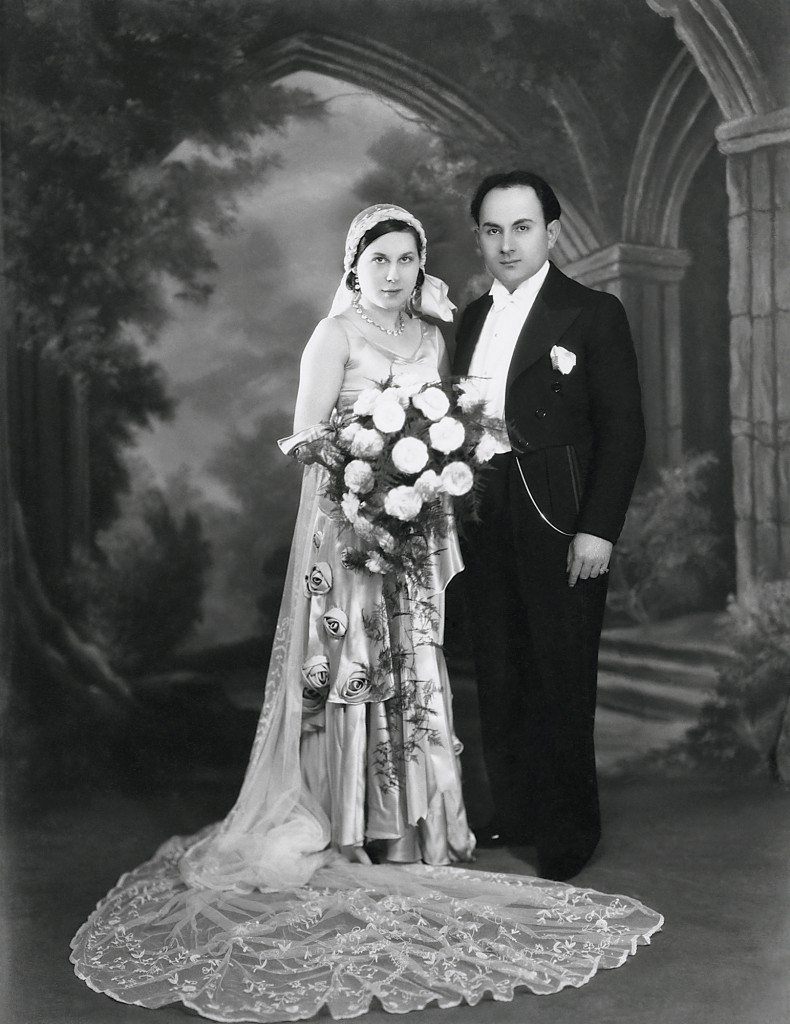AN INTRODUCTION BY THE CURATORS
Michael Greisman and Frank Harris
We are both keen amateur photographers and for many years were members of a photographic group who printed black & white images. At one of our regular meetings, Boris’s son, Michael, gave a talk about his father’s work and it immediately occurred to us that a high quality photo book of his outstanding work should be published. With the usual networking and some advertising, we visited family homes to scan their Boris photos (always considered a family heirloom) and to hear the stories behind the images. Over a period of 4 years, we collected some 700 images and finally had to make the difficult decision of selecting 125 images for the book. Some of the photos we scanned were over 75 years old and we have endeavoured to restore and reproduce them as would have appeared at the time they were taken.
With the successful launch of the Boris book ‘Vintage Glamour in London’s East End’, it occurred to both of us that a dedicated web-site would allow us to display, not only those photos in the book, but also those we could not include. It would also encourage the many other holders of Boris photos to come forward so we can post their images on the site. Over the course of Boris’s working life, he took many thousands of wedding and portrait photographs.
In addition to creating a lasting legacy, the objective of this web-site is to create an ‘ever growing’ archive of Boris’s work. It will be accessible to family, friends and researchers so that future generations can see these images and biographical details which are an essential part of our shared Jewish heritage.
With thanks to:
And all our generous contributors for sharing their precious family memories.

BORIS BENNETT – A BRIEF BIOGRAPHY
Boris Bennett (né Sokhatchevsky) arrived in England from Poland in 1922, after a brief period in Paris.

He had a childhood dream of becoming a photographer and set up his first studio just off the Whitechapel Road in London’s East End. Over the next few years, as he became more established, he moved studio’s several times before purchasing in 1934, 14 Whitechapel Road, which became his best known studio. Using interchangeable sets in the studio, Boris was able to create wedding photographs which exuded the sophisticated style and glamour of Hollywood. Boris’s warm personality and charisma meant that he was able to establish an immediate rapport with his subjects-clearly evident in his photos. An immaculate dresser himself, Boris insisted on the same level of attention to those he photographed – emphasising that his client must ‘look their best…on the most memorable day in their lives’. Because of his exceptional artistic abilities, Boris was considered the doyen of Jewish wedding photographers and became a legend in his own lifetime.
The glamour seen in these images is in stark contrast to the reality of living conditions in London’s East End at that time. A wedding photograph taken by Boris was aspirational, suggesting hope for a brighter future.
By the end of WWII, Boris had opened studios in the West End diversifying into portraiture including many well-known Jewish celebrities. Formal studio portraiture by the mid-1950’s was on the decline which prompted Boris to venture into the retail photographic business, Bennett Cameras, with his two sons, daughter and son-in-law. Over the next nine years this had expanded in to a nationwide chain before being sold to Dixons in 1963.
In the latter years of his life, Boris became a successful financier but also immersed himself in charitable endeavours. He died at home with his family in 1985.
